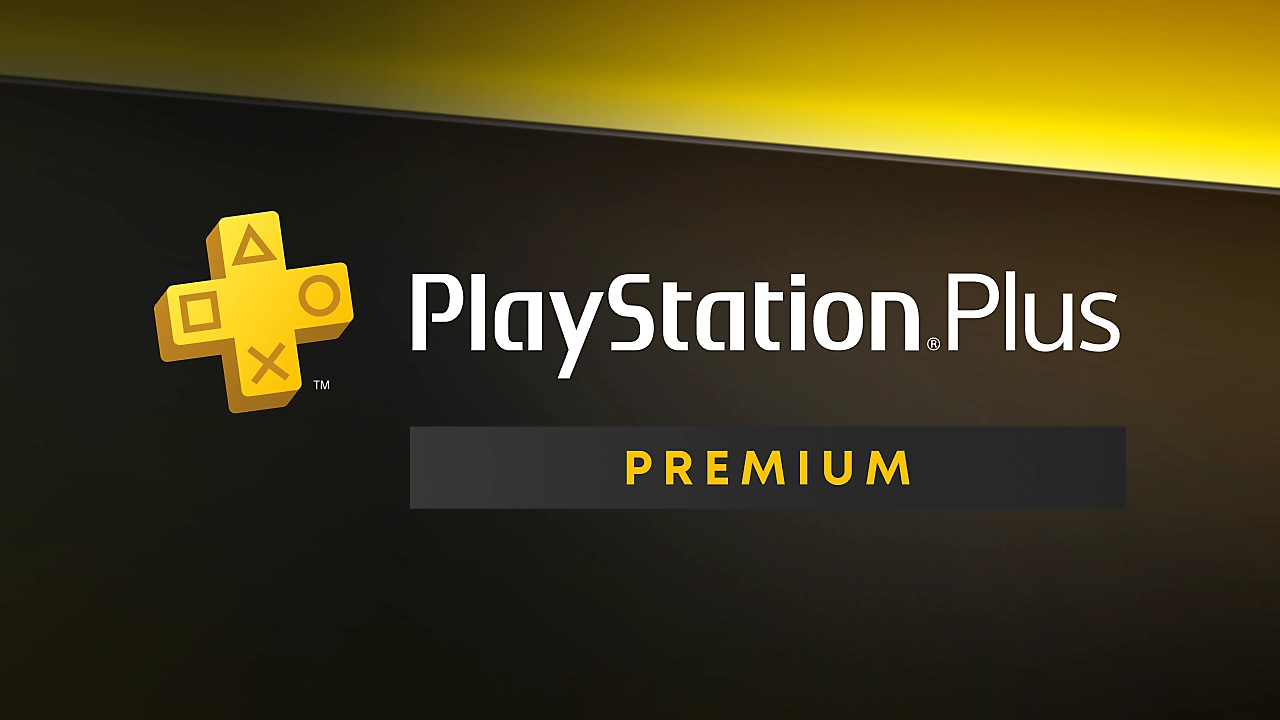Razer Edge Review
A gaming handheld that needs a reason to exist
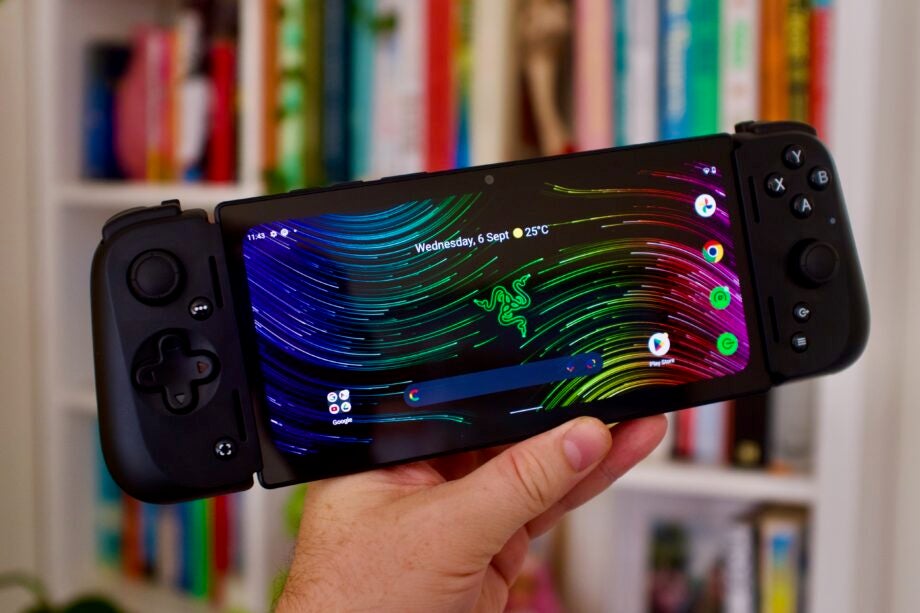
Verdict
The Razer Edge has many good parts and it works well as a complete package, yet it really struggles to warrant its existence when there are so many better options on the market.
Pros
- Easy access to a vast array of game streaming services
- Quality OLED screen
- Good amount of power
Cons
- Your phone can do most of what the Razer Edge can
- Screen isn’t ideal for game streaming
- Expensive
Key Features
- Excellent display specs6.8-inch AMOLED panel with a FHD+ resolution and 144Hz refresh rate
- Attachable Kishi V2 Pro controllerComes with the Razer Kishi V2 controller with comfortable grip, haptics and button remapping.
- Capable internalsSnapdragon G3x Gen 1 chipset, paired with 6GB RAM and 128GB storage
Introduction
Gaming handhelds are everywhere at the minute, from powerful (and pricey) versions running Windows to budget ones focussing on retro game emulation. The Razer Edge sits somewhere in the middle.
Powered by Android and comprising of a gaming tablet and detachable Kishi controller, the Edge feels a little like a device cobbled together from old parts to meet the heightened demand for handheld gaming devices.
But it’s also a showcase for Qualcomm’s gaming-focused chipset and comes packing some high-end features, including an OLED screen.
There are two versions of the Edge. The one I am reviewing here is the Wi-Fi model and it’s available in both the US ($399.99) and UK (£449.99). There’s also a Razer Edge 5G model ($599.99 + data plan), which is only available through Verizon in the US. We have a separate review of the 5G model, although they are very similar.
Design and Screen
- Comes in two parts; a tablet and a snap-on controller
- Excellent OLED display, but the aspect ratio doesn’t fit this kind of device
- Big 6.8-inch screen
The Razer Edge is made up of distinct parts: the main tablet unit with a 6.8-inch display and a detachable, spring-loaded controller. Instead of clipping on like the Joy-Cons on the Nintendo Switch, the controller expands and sits around the whole tablet, plugging into the USB-C port. It’s the same style as something like the Backbone – a controller I really like.
The tablet itself is basic, at least in terms of its design. It mimics an Android phone but with a slightly more angular overall look and a complete lack of cameras on the back. Compared to the Samsung Galaxy S23 Ultra, a phone with the same size 6.8-inch screen, the Razer Edge is larger and heavier.
It also has much thicker bezels around the display than you’d find on the best Android phones. Razer has, rather strangely, decided to round out the bezels rather than match the angles of the device. Not only does this make the screen smaller than it could be, but it gives the overall device a strange look.
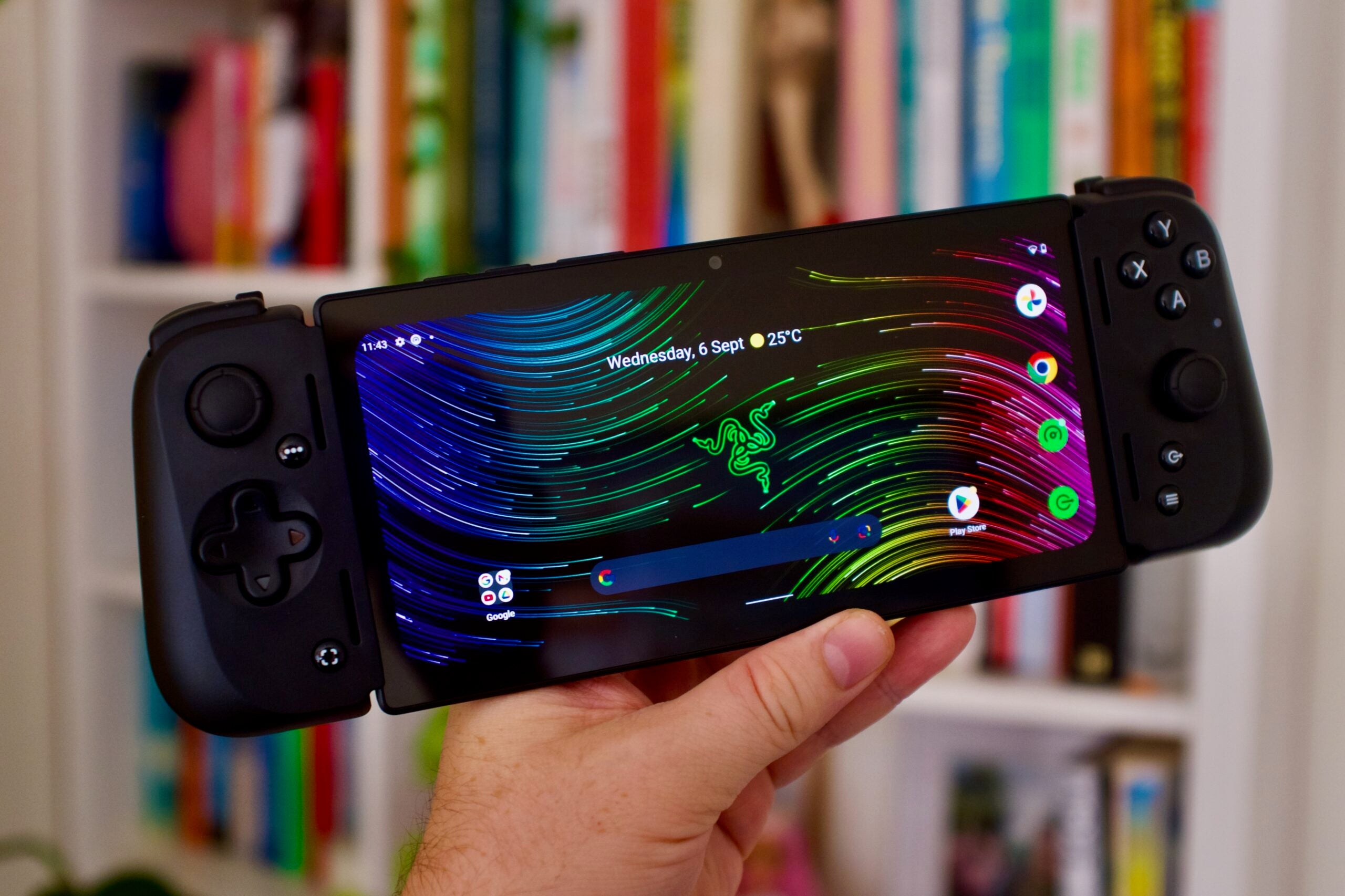
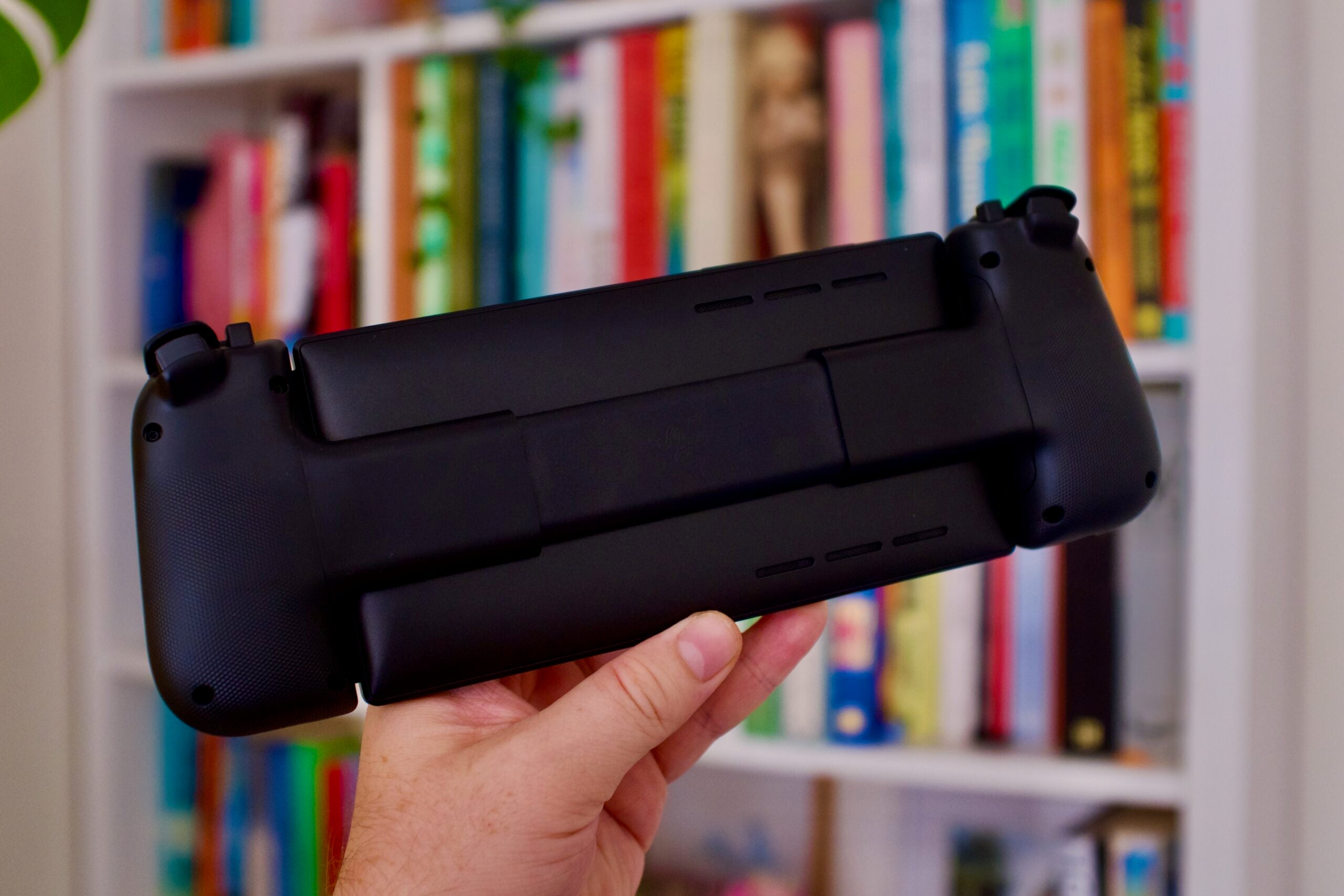
One benefit of having the controller able to be completely detached is that the Edge can be used solely as a small tablet.
You could remove the controller and use on-screen controls, or just watch YouTube or Netflix. Oddly, some apps – notably Netflix – can’t be used in landscape mode until a video starts playing.
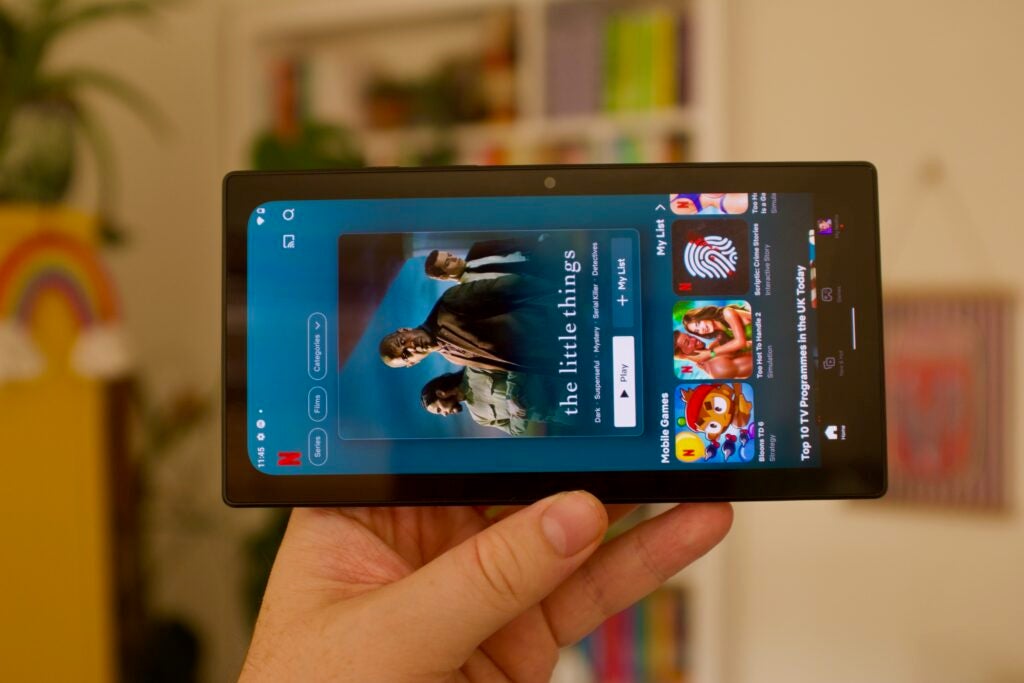
Whether you’re watching a video or playing a game, the screen is great and props to Razer for not skimping on the panel. It’s an FHD+ OLED display, with a max 144Hz refresh rate that can be dialled down to 120Hz, 90Hz and 60Hz. Colours pop with vibrancy and the OLED tech allows for perfect blacks, giving more immersion to games set in dark environments.
Not all is perfect with the display though. By going with a wide 20:9 panel, you’ll spend much of your time with thick black bars on either side of your game. This is noticeable everywhere, from Xbox Games Pass, which pushes images out at 16:9, to retro titles. Really the only instance when you’ll get a benefit from the much wider screen is when playing Android games.
Controller
- Kishi V2 Pro controller is part of the package
- Comfortable to hold
- Rumble features included
Part of the Razer Edge package is the Razer Kishi V2 Pro controller – this turns the tablet into a handheld gaming machine. This controller is the same version that is sold separately and if you so wish, you could attach it to another Android phone and use it there too.

The Kishi V2 Pro fits snuggly around the tablet, clicking into the USB-C port and feeling sturdy and secure. To make up for the loss of the USB-C port on the tablet, there’s an extra one on the bottom of the controller so you can charge and play at the same time.
There are plenty of buttons and controls dotted around. The A,B,Y and X buttons are a tad small for my liking, but the analogue D-Pad is very tactile and clicky and the sticks are responsive. There are also L1, L2, R1 and R2 buttons, plus mappable M1 and M2 buttons that are handy when using PS Remote Play. Support for rumble is included too if it’s supported natively within a game, which is a feature often missed off these controllers.
It’s a well-built and mostly sturdy controller, but it is a little plasticky and, at times, a bit creaky when quick movement is required. The handles have a nice amount of grippy texture on them and it is comfortable to hold for extended gaming sessions.
Power is pulled directly from the Razer Edge tablet so you don’t need to charge the Kishi controller separately.
Performance
- There’s a good amount of power here
- This Wi-Fi only version feels limited
- Expandable storage
This is the Wi-Fi only version of the Razer Edge, which is currently the only model available in regions outside of the USA. The 5G version, which is available through Verizon in the States, has a little extra RAM (8GB as opposed to 6GB here) and of course the benefit of being able to play wherever you have a cellular connection. For a device like this, I feel 5G is a must and not launching that version further afield is a mistake.
The rest of the specs between the 5G model and the Wi-Fi are the same, including the Snapdragon G3x Gen 1 chipset, Wi-Fi 6E support and a microSD card slot. This chip can be compared to the Snapdragon 888+ from 2021, just with a few overclocked elements. It is comprised of 8-cores – 4x ARM Cortex A55, 3x A78 and a single X1. Along with the Adreno 660 GPU. Since the release of the Razer Edge, Qualcomm has launched a trio of new gaming-focused G chips, which will likely be appearing in future handsets.
Performance is good, and similar to a number of higher-end phones from late 2021 and early 2022. Android games can be pushed to their limits, with maxed-out graphics when available. Check out the charts below to see how the Razer Edge compares against a selection of similar devices.
However, I think most people will likely use this as a game streaming device, and having powerful internals for this is less important. Of course, which games you can stream will depend on which subscriptions, services or hardware you have access to. You can, for instance, stream games directly from a PS5 console with the Remote Play app and this works very really well – although the console will need to be turned.
Services like Xbox Game Pass work really well and allow you to play Xbox games streamed directly from the cloud. I tried this with Forza Horizon 5 and everything from the excellent OLED screen to the good controls worked together nicely. How the game plays will depend entirely on your internet connection, though and if you have slow home internet your experience will be far worse.
My big issue is that you can do all this on other devices. The phone in your pocket can most likely stream games via Remote Play or Game Pass, just attach a controller and off you go. If you’ve got a tablet you could use that by pairing a PS5, Xbox or any other controller and there’s arguably much bigger competition to those on the market for a new handheld – portable gaming PCs like the Steam Deck, Asus ROG Ally and the Ayaneo 2S.
The Steam Deck in its most affordable guise is £100/$100 cheaper than the Razer Edge and aside from being smaller, I can’t really highlight any reason why someone would buy this over that.
Battery Life
- 5000mAh battery matches many of the best phones
- Supports fast charging
There are a lot of similarities between the battery you’d get on a large Android phone and the Razer Edge. This isn’t an endurance champion – you’ll get far longer of a single charge with the Logitech G Cloud – but it still lasts enough time to have extended gaming sessions, whether you’re playing titles natively on the device or via streaming.
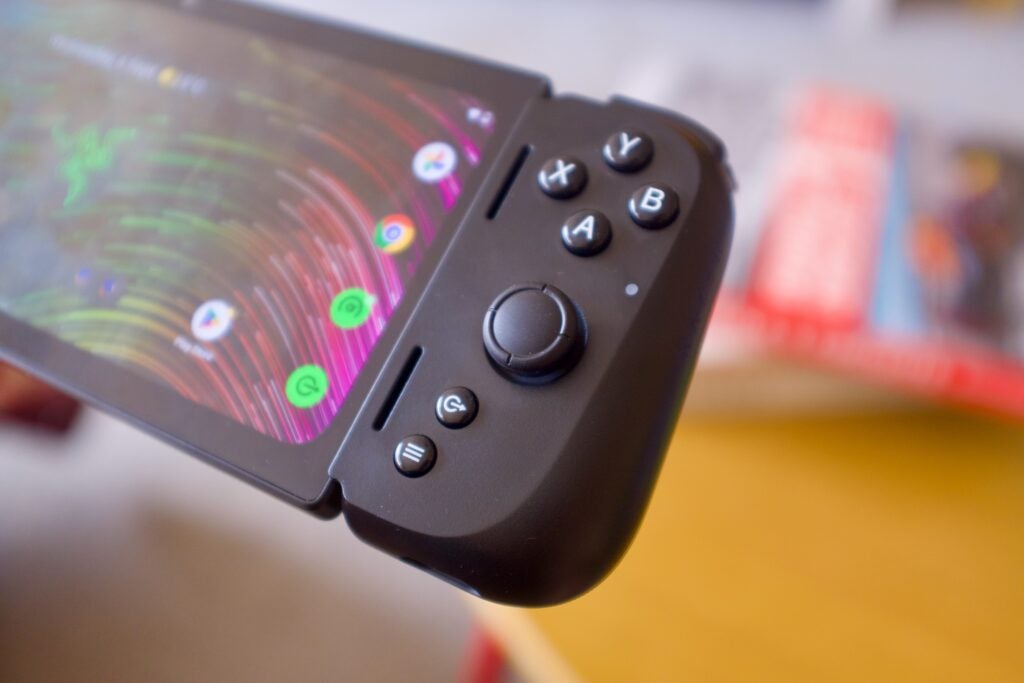
Using Xbox Game Pass as an example, I tended to get between five and six hours of gameplay with the screen set to 120Hz. Following the same tests our reviewer did on the 5G toting model, I ate through 16% of the battery playing HiFi Rush for 45 minutes. That result is pretty much exactly the same as we got on the Razer Edge 5G. In our review of the 5G model, our reviewer noted an issue where the device wouldn’t stay in the standby mode and drained very quickly. I have not had this issue with the Wi-Fi version.
There’s a charging cable in the box, although a plug isn’t provided. Using a 30w plug, I got a 50% charge in 50 minutes and a full charge in 80 minutes.
Software
- Full access to Google Play for apps and games
- Software overlay attempts to pull
The Razer Edge runs on Android making it easy to fill with various apps and games from the Google Play Store, and further afield. Interestingly, it’s very much the phone version of Android even though the screen, and the way I typically hold the device with the controllers attached, feels like it would be more at home with a tablet version.
Apps, like Netflix, don’t appreciate being opened in landscape mode and a lot of apps feel overly stretched – even Google’s own YouTube.
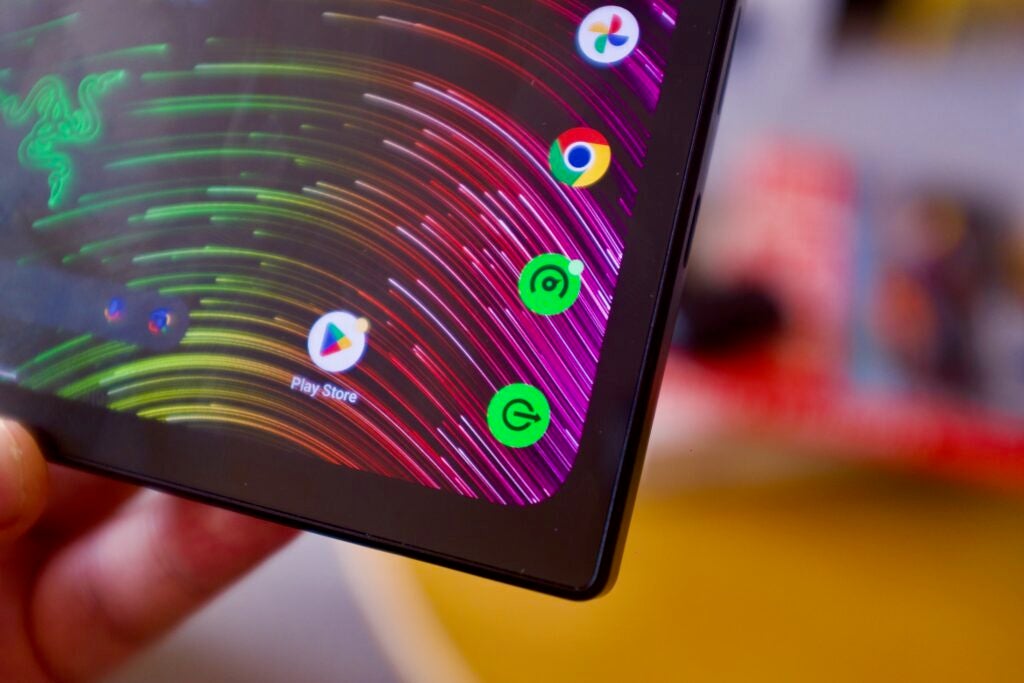
Razer has added a few tweaks and extras to the software. The Nexus home screen combines multiple games and streaming services together in a sleek interface that feels much more natural to navigate with the controllers attached.
This app also lets you alter individual settings, like remapping the controllers for certain games, changing the intensity of the haptic response and streaming to YouTube and Facebook.
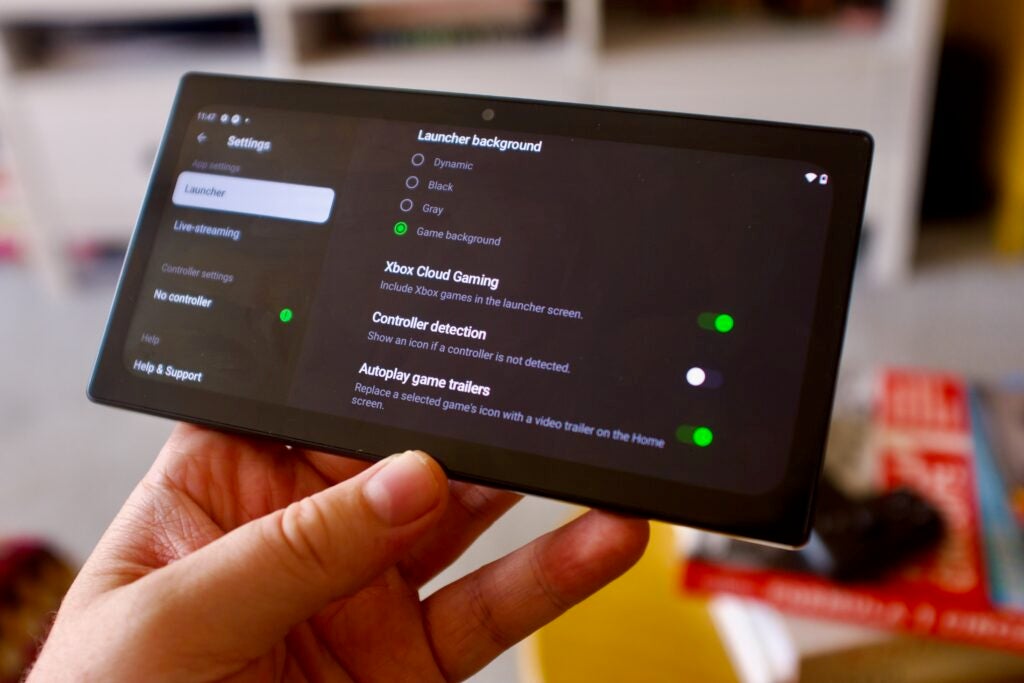
Android is a smart choice as there’s support for a wide range of services. Android games, of course, plus the vast array of emulators and game streaming services available on Google Play. You’ll find apps for Remote Play (PS5), Game Pass, Nvidia’s GeForce Now and Steam Link, plus plenty more.
Latest deals
Should you buy it?
You should buy the Razer Edge if you must have a dedicated Android device for gaming
This is a well-powered Android device with wide support for game streaming and native Android gaming. If that’s what you want, and you don’t have a capable smartphone already in your pocket, this is a worthwhile solution.
You shouldn’t buy if you want the best game-streaming option
The overly wide screen is great on a phone, less so on a device focussing on streaming and playing 16:9 games.
Final Thoughts
The Razer Edge is a hard device to recommend, even if it’s well-made with a great screen and decent performance. As our US reviewer, Chris Smith said in his review of the 5G version, this isn’t really worth buying unless “you’re determined to segregate your gaming life from your smartphone life”.
If I was looking for a device for game streaming, I would either want one with 5G or one with a 16:9 aspect ratio display. The Logitech G Cloud is far from perfect, but I much prefer its more traditional screen size.
You could also just stick the Kishi V2 Pro controller on your current phone and stream games that way. Even mid-range phones can comfortably play the vast majority of Android titles, and you don’t need much power to stream.
If the Razer Edge was a little cheaper and had a 16:9 display it would be a smarter choice.
How we test
We tested the Razer Edge by playing a variety of different games, while also using benchmark tests to determine performance. We also measured the battery life by playing games.
Spent a week with the Razer Edge, mostly playing Xbox Game Pass, Android gaming and PS5 Remote Play
Played a range of titles
FAQs
There is a 5G version available through Verizon in the US.




